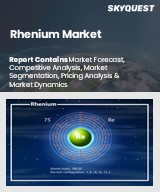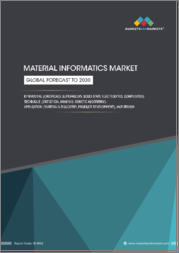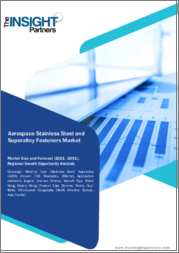
|
시장보고서
상품코드
1754161
초합금 시장 보고서 : 기재, 용도, 지역별(2025-2033년)Superalloys Market Report by Base Material (Nickel-Based, Iron-Based, Cobalt-Based), Application (Aerospace, Industrial Gas Turbine, Automotive, Oil and Gas, Industrial, and Others), and Region 2025-2033 |
||||||
세계의 초합금 시장 규모는 2024년에 65억 달러에 달했습니다. 향후 IMARC Group은 시장이 2033년까지 100억 달러에 달하며, 2025-2033년에 4.88%의 성장률(CAGR)을 보일 것으로 예측하고 있습니다. 항공우주 용도, 특히 제트 엔진에서의 제품 사용 증가, 세계 각국의 군비 증가, 고온 산업 용도 증가, 재료 과학 관련 연구 활동 확대 등이 시장 성장의 주요 요인으로 꼽히고 있습니다.
초합금은 극한의 기계적 응력, 고온, 부식 환경에 견딜 수 있도록 설계된 특수 소재를 말합니다. 니켈, 코발트, 철 등의 원소의 복잡한 혼합물로 구성된 초합금은 우수한 강도, 열 안정성, 내마모성을 갖도록 설계되어 있습니다. 초합금 합금의 결정 구조는 스트레스가 많은 조건에서 성능을 최적화하도록 세심하게 설계되어 항공우주 엔진, 가스 터빈, 다양한 산업 용도에 필수적인 부품으로 사용되고 있습니다. 초합금은 일반적으로 높은 하중을 견디고 고온에서 산화 및 부식에 저항해야 하는 부품에 사용됩니다.
세계 시장은 주로 고온 및 고압에 견딜 수 있는 소재를 필요로 하는 항공우주 용도, 특히 제트 엔진에 대한 제품 사용 증가에 의해 주도되고 있습니다. 이에 따라 세계 항공 산업의 확장은 시장 성장에 탄력을 받고 있습니다. 또한 발전소의 에너지 효율이 높은 가스 터빈에 대한 수요 증가도 큰 성장 동력으로 작용하고 있습니다. 이와 더불어, 재료 과학의 발전은 보다 내구성이 높고 효율적인 초합금으로의 길을 열어 새로운 투자 기회를 창출하고 있습니다. 또한 장비의 내구성과 안전성을 보장하기 위한 정부 규제는 고품질 초합금의 채택을 촉진하고 있습니다. 또한 다양한 용도의 견고한 소재를 요구하는 군 비용 증가가 시장을 주도하고 있습니다. 이 외에도 첨단 의료기기 및 장비를 필요로 하는 헬스케어 분야의 성장, 열악한 산업 환경을 견딜 수 있는 소재에 대한 수요 증가, 광범위한 연구개발(R&D) 활동도 시장 수요를 증가시키는 요인 중 하나입니다.
초합금 시장 동향과 촉진요인:
고온 산업 용도 증가
고온 환경에 견딜 수 있는 재료의 필요성이 급증하고 있는 것이 세계의 초합금 시장을 주도하는 가장 중요한 요인이 되고 있습니다. 특히 제트 엔진과 가스 터빈이 극한의 열과 스트레스 조건에서 작동되는 항공 및 발전 등의 분야에서 초합금은 사실상 대체할 수 없는 재료가 되었습니다. 이들 재료는 뛰어난 기계적 강도, 우수한 열 안정성, 부식성 대기를 견딜 수 있는 능력을 자랑합니다. 항공우주 및 에너지 분야에서는 연비 향상과 이산화탄소 배출량 감소가 요구되고 있으며, 가혹한 조건에서도 고장 없이 작동할 수 있는 소재가 요구되고 있습니다. 기술이 발전함에 따라 효율 향상을 위해 더 높은 연소 온도가 요구되고 있으며, 이에 따라 재료에 대한 도전도 더욱 까다로워지고 있습니다. 그 결과, 보다 탄력적인 초합금을 만들기 위한 연구개발에 대한 투자가 가속화되고 있으며, 이러한 재료 시장이 장기적으로 견고하게 유지될 수 있도록 보장하고 있습니다.
재료과학 관련 연구 활동 증가
최근 수년간 재료 과학은 획기적인 발전을 이루며 세계 시장에 변화를 가져왔습니다. 과거에는 주로 학문적 연구 대상으로 여겨졌던 초합금은 그 역할을 넘어 항공우주, 자동차, 의료, 석유 및 가스 분야에 이르기까지 다양한 산업에 필수적인 재료로 자리 잡았습니다. 과학자와 엔지니어들은 면밀한 연구와 최첨단 제조 공정을 통해 야금학의 한계를 뛰어넘어 극한의 응력, 열, 부식 환경을 견딜 수 있는 초합금을 만들어냈습니다. 이러한 특성은 제트 엔진, 수술용 임플란트, 고압 드릴링 장비와 같은 실제 용도에서 재료의 이점으로 이어집니다. 재료 과학이 발전할 때마다 초합금의 기존 용도가 개선될 뿐만 아니라 시장에 새로운 길을 열어줍니다. 기술 혁신과 시장 성장 사이의 이러한 순환 관계는 연구개발(R&D) 활동의 지속을 더욱 촉진하여 시장 전망을 더욱 밝게 만듭니다.
군비 대폭 증가
초합금의 전략적 중요성이 특히 강조되는 배경에는 세계 각국의 군비 증가가 있습니다. 지정학적 긴장이 고조됨에 따라 각국은 끊임없이 국방력 강화를 모색하고 있습니다. 초합금은 군용 항공우주 엔진, 군장비, 기타 고응력 및 극한 조건에서의 성능이 요구되는 환경에서의 재료 적용을 고려할 때, 이러한 맥락에서 매우 중요합니다. 이러한 특수 소재는 기계적 강도와 열 및 환경적 열화에 대한 내성을 겸비하고 있으며, 최첨단 군 장비 생산에 필수적인 요소로 작용하고 있습니다. 세계 각국이 군력 강화를 위해 더 많은 자원을 투입하고 있는 가운데, 초합금 시장은 국방 분야에 필수적인 엄격한 성능 및 탄력성 기준을 충족하는 합금에 특히 중점을 두고 있으며, 이에 따라 수요가 증가하고 있습니다.
목차
제1장 서문
제2장 조사 범위와 조사 방법
- 조사의 목적
- 이해관계자
- 데이터 소스
- 1차 정보
- 2차 정보
- 시장 추정
- 보텀업 어프로치
- 톱다운 어프로치
- 조사 방법
제3장 개요
제4장 서론
- 개요
- 주요 업계 동향
제5장 세계의 초합금 시장
- 시장 개요
- 시장 실적
- COVID-19의 영향
- 시장 예측
제6장 시장 내역 : 기재별
- 니켈 기반
- 철 기반
- 코발트 기반
제7장 시장 내역 : 용도별
- 항공우주
- 주요 부문
- 상업 및 화물
- 비즈니스
- 군대
- 로터리
- 주요 부문
- 산업용 가스 터빈
- 주요 부문
- 전기
- 기계
- 주요 부문
- 자동차
- 석유 및 가스
- 산업
- 기타
제8장 시장 내역 : 지역별
- 북미
- 미국
- 캐나다
- 아시아태평양
- 중국
- 일본
- 인도
- 한국
- 호주
- 인도네시아
- 기타
- 유럽
- 독일
- 프랑스
- 영국
- 이탈리아
- 스페인
- 러시아
- 기타
- 라틴아메리카
- 브라질
- 멕시코
- 기타
- 중동 및 아프리카
- 시장 내역 : 국가별
제9장 SWOT 분석
- 개요
- 강점
- 약점
- 기회
- 위협
제10장 밸류체인 분석
제11장 Porter's Five Forces 분석
- 개요
- 바이어의 교섭력
- 공급 기업의 교섭력
- 경쟁의 정도
- 신규 진출업체의 위협
- 대체품의 위협
제12장 가격 분석
제13장 경쟁 구도
- 시장 구조
- 주요 기업
- 주요 기업의 개요
- Allegheny Technologies Inc
- AMG Superalloys
- Aperam S.A.
- Cannon-Muskegon Corporation
- Carpenter Technology Corporation
- Doncasters Group
- Haynes International Inc
- IHI Corporation
- IMET Alloys
- Mishra Dhatu Nigam Limited
- Special Metals Corporation
- Western Australian Specialty Alloys(Precision Castparts Corp.)
The global superalloys market size reached USD 6.5 Billion in 2024. Looking forward, IMARC Group expects the market to reach USD 10.0 Billion by 2033, exhibiting a growth rate (CAGR) of 4.88% during 2025-2033. The increasing product utilization in aerospace applications, particularly jet engines, rising military expenditure in several countries across the globe, growing number of high-temperature industrial applications, and expanding research-related activities on material science represent some of the factors that are propelling the market.
Superalloys refer to specialized materials that are designed to withstand extreme mechanical stress, elevated temperatures, and corrosive environments. Comprising a complex blend of elements such as nickel, cobalt, and iron, superalloys are engineered for superior strength, thermal stability, and resistance to wear and tear. The alloy's crystalline structure is meticulously formulated to optimize performance under stressful conditions, often making them an essential component in aerospace engines, gas turbines, and various industrial applications. Superalloys are typically used in components that must bear high loads and resist oxidation or corrosion at elevated temperatures.
The global market is primarily driven by the increasing product utilization in aerospace applications, particularly jet engines that require materials capable of withstanding high temperatures and pressures. In line with this, the expansion of the global aviation industry is providing an impetus to the market. Moreover, the rising demand for energy-efficient gas turbines in power plants is acting as a significant growth-inducing factor. In addition to this, ongoing advancements in material science are paving the way for more durable and efficient superalloys, thereby creating new investment opportunities. Also, government regulations aimed at ensuring equipment durability and safety are stimulating the adoption of high-quality superalloys. The market is further driven by increased military spending, which demands robust materials for various applications. Apart from this, the growing healthcare sector requiring advanced medical devices and equipment, rising need for materials that can withstand extreme industrial conditions, and extensive research and development (R&D) activities are some of the factors that are elevating market demand.
Superalloys Market Trends/Drivers:
Growth in the number of high-temperature industrial applications
The burgeoning necessity for materials that can endure high-temperature environments is a paramount factor steering the global superalloys market. Particularly in sectors like aviation and power generation, where jet engines and gas turbines operate under extreme heat and stress conditions, superalloys have become virtually irreplaceable. These materials boast superior mechanical strength, excellent thermal stability, and the ability to withstand corrosive atmospheres. The ongoing quest for greater fuel efficiency and reduced carbon emissions in aerospace and energy sectors further necessitates materials that can perform under taxing conditions without failure. As technology advances, higher combustion temperatures are sought for better efficiency, thereby putting more challenging demands on materials. As a result, investments in research and development for creating even more resilient superalloys have accelerated, ensuring that the market for these materials remains robust over the long term.
Increasing research-related activities on material science
Material science has witnessed groundbreaking advancements in recent years that have had a transformative impact on the global market. Previously regarded primarily as subjects of academic investigation, superalloys have transcended this role to become indispensable materials integral to an array of industries, from aerospace and automotive to healthcare and the oil and gas sectors. Through meticulous research and state-of-the-art manufacturing processes, scientists and engineers have pushed the boundaries of metallurgy, facilitating the creation of superalloys that can withstand extremes of stress, heat, and corrosive environments. These properties translate to material advantages in real-world applications such as jet engines, surgical implants, and high-pressure drilling equipment. Each advancement in material science not only refines existing applications for superalloys but also opens up new avenues for the market. This cyclical relationship between innovation and market growth further incentivizes ongoing research and development (R&D) activities, which in turn creates a positive market outlook.
Considerable rise in military expenditure
The strategic importance of superalloys gains particular emphasis against the backdrop of increased military spending in several countries across the globe. The heightened geopolitical tensions are resulting in nations continually looking to enhance their defense capabilities. Superalloys are pivotal in this context, given their application in military aerospace engines, armaments, and other environments that demand materials to perform under high-stress and extreme conditions. These specialized materials offer a combination of mechanical strength and resistance to thermal and environmental degradation, making them indispensable in the production of cutting-edge military equipment. As countries globally allocate more resources to fortify their military capabilities, the market for superalloys correspondingly experiences amplified demand, with a specific focus on alloys that meet the rigorous performance and resilience criteria essential for defense applications.
Superalloys Industry Segmentation:
Breakup by Base Material:
- Nickel-Based
- Iron-Based
- Cobalt-Based
Nickel-based represents the largest market segment
The nickel-based segment is majorly driven by its widespread application in aerospace and energy sectors due to its superior mechanical properties and resistance to corrosion. These alloys are critical for high-temperature applications such as in jet engines and gas turbines, making them invaluable in those industries. Additionally, the ongoing trend towards fuel efficiency and emissions reduction places nickel-based superalloys as a preferred material. Technological advancements in metallurgy have also enabled the creation of nickel-based superalloys with improved performance attributes. The growing demand for these specific characteristics establishes a robust market for nickel-based alloys.
On the other hand, the iron-based and cobalt-based superalloys segments are commonly used in automotive and industrial applications where high tensile strength is required but not necessarily the high-temperature resistance that nickel-based superalloys provide. Their lower cost compared to nickel-based alloys also makes them attractive for certain applications. Advancements in the production methods for these materials have led to increased efficiency and thus a broader range of applications.
Breakup by Application:
- Aerospace
- Commercial and Cargo
- Business
- Military
- Rotary
- Industrial Gas Turbine
- Electrical
- Mechanical
- Automotive
- Oil and Gas
- Industrial
- Others
Aerospace accounts for the majority of the market share
The aerospace sector is a major consumer of superalloys, largely due to the material's ability to withstand extreme temperatures and pressures. The drive for higher fuel efficiency and performance in modern aircraft has placed increased importance on lightweight yet durable materials, making superalloys a popular choice. Moreover, the trend towards more efficient, quieter, and eco-friendly aircraft engines further emphasizes the critical role superalloys play. Government investment in aerospace research and development, as well as a strong push for defense modernization, are also contributing factors.
On the other hand, for industrial gas turbine (electrical and mechanical), automotive, oil and gas, industrial, and others-superalloys find specific yet important applications. They are essential for certain parts of gas turbines, particularly in high-temperature zones. In the automotive industry, superalloys are used for specialized components that require exceptional strength. While their application in oil and gas is relatively limited, it is growing, particularly in drilling and extraction activities that require corrosion-resistant materials.
Breakup by Region:
- North America
- United States
- Canada
- Asia-Pacific
- China
- Japan
- India
- South Korea
- Australia
- Indonesia
- Others
- Europe
- Germany
- France
- United Kingdom
- Italy
- Spain
- Russia
- Others
- Latin America
- Brazil
- Mexico
- Others
- Middle East and Africa
North America exhibits a clear dominance, accounting for the largest superalloys market share
The market research report has also provided a comprehensive analysis of all the major regional markets, which include North America (the United States and Canada); Asia Pacific (China, Japan, India, South Korea, Australia, Indonesia, and others); Europe (Germany, France, the United Kingdom, Italy, Spain, Russia, and others); Latin America (Brazil, Mexico, and others); and the Middle East and Africa. According to the report, North America accounted for the largest market share.
The North America region plays a significant role in the global market. Factors contributing to this prominence include robust aerospace and defense sectors, especially in developed nations such as the United States, which is a world leader in aircraft manufacturing.
Moreover, the availability of advanced manufacturing facilities, skilled labor, and sophisticated technologies enhance production capabilities. In addition to this, favorable trade policies and economic stability contribute to a favorable business environment, thereby making North America a substantial market for superalloys.
Furthermore, North America has extensive natural resources, enabling easier access to raw materials necessary for superalloys production. Innovation and research in material science are also strong in this region, further propelling the market for superalloys. The stringent regulatory landscape, particularly in relation to environmental sustainability and emissions, pushes industries to adopt more efficient materials, thus providing a boost to superalloys.
Competitive Landscape:
The key players are diligently working on refining the alloy compositions to enhance performance characteristics such as corrosion resistance and mechanical strength. They are continuously investing in research and development activities to create superior products that can withstand extreme conditions. These firms are also engaging in strategic collaborations to expand their expertise and market reach. Market leaders are increasingly targeting specific industries like aerospace and energy to provide customized solutions. Quality control and sustainability are other critical areas where these key market players are dedicating resources. Furthermore, they are regularly seeking certifications and complying with international standards to gain a competitive edge.
The report has provided a comprehensive analysis of the competitive landscape in the market. Detailed profiles of all major companies have also been provided. Some of the key players in the market include:
- Allegheny Technologies Inc
- AMG Superalloys
- Aperam S.A.
- Cannon-Muskegon Corporation
- Carpenter Technology Corporation
- Doncasters Group
- Haynes International Inc
- IHI Corporation
- IMET Alloys
- Mishra Dhatu Nigam Limited
- Special Metals Corporation
- Western Australian Specialty Alloys (Precision Castparts Corp.)
Key Questions Answered in This Report
- 1.How big is the global superalloys market?
- 2.What is the expected growth rate of the global superalloys market during 2025-2033?
- 3.What are the key factors driving the global superalloys market?
- 4.What has been the impact of COVID-19 on the global superalloys market?
- 5.What is the breakup of the global superalloys market based on the base material?
- 6.What is the breakup of the global superalloys market based on the application?
- 7.What are the key regions in the global superalloys market?
- 8.Who are the key players/companies in the global superalloys market?
Table of Contents
1 Preface
2 Scope and Methodology
- 2.1 Objectives of the Study
- 2.2 Stakeholders
- 2.3 Data Sources
- 2.3.1 Primary Sources
- 2.3.2 Secondary Sources
- 2.4 Market Estimation
- 2.4.1 Bottom-Up Approach
- 2.4.2 Top-Down Approach
- 2.5 Forecasting Methodology
3 Executive Summary
4 Introduction
- 4.1 Overview
- 4.2 Key Industry Trends
5 Global Superalloys Market
- 5.1 Market Overview
- 5.2 Market Performance
- 5.3 Impact of COVID-19
- 5.4 Market Forecast
6 Market Breakup by Base Material
- 6.1 Nickel-Based
- 6.1.1 Market Trends
- 6.1.2 Market Forecast
- 6.2 Iron-Based
- 6.2.1 Market Trends
- 6.2.2 Market Forecast
- 6.3 Cobalt-Based
- 6.3.1 Market Trends
- 6.3.2 Market Forecast
7 Market Breakup by Application
- 7.1 Aerospace
- 7.1.1 Market Trends
- 7.1.2 Key Segments
- 7.1.2.1 Commercial and Cargo
- 7.1.2.2 Business
- 7.1.2.3 Military
- 7.1.2.4 Rotary
- 7.1.3 Market Forecast
- 7.2 Industrial Gas Turbine
- 7.2.1 Market Trends
- 7.2.2 Key Segments
- 7.2.2.1 Electrical
- 7.2.2.2 Mechanical
- 7.2.3 Market Forecast
- 7.3 Automotive
- 7.3.1 Market Trends
- 7.3.2 Market Forecast
- 7.4 Oil and Gas
- 7.4.1 Market Trends
- 7.4.2 Market Forecast
- 7.5 Industrial
- 7.5.1 Market Trends
- 7.5.2 Market Forecast
- 7.6 Others
- 7.6.1 Market Trends
- 7.6.2 Market Forecast
8 Market Breakup by Region
- 8.1 North America
- 8.1.1 United States
- 8.1.1.1 Market Trends
- 8.1.1.2 Market Forecast
- 8.1.2 Canada
- 8.1.2.1 Market Trends
- 8.1.2.2 Market Forecast
- 8.1.1 United States
- 8.2 Asia-Pacific
- 8.2.1 China
- 8.2.1.1 Market Trends
- 8.2.1.2 Market Forecast
- 8.2.2 Japan
- 8.2.2.1 Market Trends
- 8.2.2.2 Market Forecast
- 8.2.3 India
- 8.2.3.1 Market Trends
- 8.2.3.2 Market Forecast
- 8.2.4 South Korea
- 8.2.4.1 Market Trends
- 8.2.4.2 Market Forecast
- 8.2.5 Australia
- 8.2.5.1 Market Trends
- 8.2.5.2 Market Forecast
- 8.2.6 Indonesia
- 8.2.6.1 Market Trends
- 8.2.6.2 Market Forecast
- 8.2.7 Others
- 8.2.7.1 Market Trends
- 8.2.7.2 Market Forecast
- 8.2.1 China
- 8.3 Europe
- 8.3.1 Germany
- 8.3.1.1 Market Trends
- 8.3.1.2 Market Forecast
- 8.3.2 France
- 8.3.2.1 Market Trends
- 8.3.2.2 Market Forecast
- 8.3.3 United Kingdom
- 8.3.3.1 Market Trends
- 8.3.3.2 Market Forecast
- 8.3.4 Italy
- 8.3.4.1 Market Trends
- 8.3.4.2 Market Forecast
- 8.3.5 Spain
- 8.3.5.1 Market Trends
- 8.3.5.2 Market Forecast
- 8.3.6 Russia
- 8.3.6.1 Market Trends
- 8.3.6.2 Market Forecast
- 8.3.7 Others
- 8.3.7.1 Market Trends
- 8.3.7.2 Market Forecast
- 8.3.1 Germany
- 8.4 Latin America
- 8.4.1 Brazil
- 8.4.1.1 Market Trends
- 8.4.1.2 Market Forecast
- 8.4.2 Mexico
- 8.4.2.1 Market Trends
- 8.4.2.2 Market Forecast
- 8.4.3 Others
- 8.4.3.1 Market Trends
- 8.4.3.2 Market Forecast
- 8.4.1 Brazil
- 8.5 Middle East and Africa
- 8.5.1 Market Trends
- 8.5.2 Market Breakup by Country
- 8.5.3 Market Forecast
9 SWOT Analysis
- 9.1 Overview
- 9.2 Strengths
- 9.3 Weaknesses
- 9.4 Opportunities
- 9.5 Threats
10 Value Chain Analysis
11 Porters Five Forces Analysis
- 11.1 Overview
- 11.2 Bargaining Power of Buyers
- 11.3 Bargaining Power of Suppliers
- 11.4 Degree of Competition
- 11.5 Threat of New Entrants
- 11.6 Threat of Substitutes
12 Price Analysis
13 Competitive Landscape
- 13.1 Market Structure
- 13.2 Key Players
- 13.3 Profiles of Key Players
- 13.3.1 Allegheny Technologies Inc
- 13.3.1.1 Company Overview
- 13.3.1.2 Product Portfolio
- 13.3.1.3 Financials
- 13.3.1.4 SWOT Analysis
- 13.3.2 AMG Superalloys
- 13.3.2.1 Company Overview
- 13.3.2.2 Product Portfolio
- 13.3.3 Aperam S.A.
- 13.3.3.1 Company Overview
- 13.3.3.2 Product Portfolio
- 13.3.3.3 Financials
- 13.3.4 Cannon-Muskegon Corporation
- 13.3.4.1 Company Overview
- 13.3.4.2 Product Portfolio
- 13.3.5 Carpenter Technology Corporation
- 13.3.5.1 Company Overview
- 13.3.5.2 Product Portfolio
- 13.3.5.3 Financials
- 13.3.5.4 SWOT Analysis
- 13.3.6 Doncasters Group
- 13.3.6.1 Company Overview
- 13.3.6.2 Product Portfolio
- 13.3.7 Haynes International Inc
- 13.3.7.1 Company Overview
- 13.3.7.2 Product Portfolio
- 13.3.7.3 Financials
- 13.3.7.4 SWOT Analysis
- 13.3.8 IHI Corporation
- 13.3.8.1 Company Overview
- 13.3.8.2 Product Portfolio
- 13.3.8.3 Financials
- 13.3.8.4 SWOT Analysis
- 13.3.9 IMET Alloys
- 13.3.9.1 Company Overview
- 13.3.9.2 Product Portfolio
- 13.3.10 Mishra Dhatu Nigam Limited
- 13.3.10.1 Company Overview
- 13.3.10.2 Product Portfolio
- 13.3.10.3 Financials
- 13.3.11 Special Metals Corporation
- 13.3.11.1 Company Overview
- 13.3.11.2 Product Portfolio
- 13.3.12 Western Australian Specialty Alloys (Precision Castparts Corp.)
- 13.3.12.1 Company Overview
- 13.3.12.2 Product Portfolio
- 13.3.1 Allegheny Technologies Inc



















